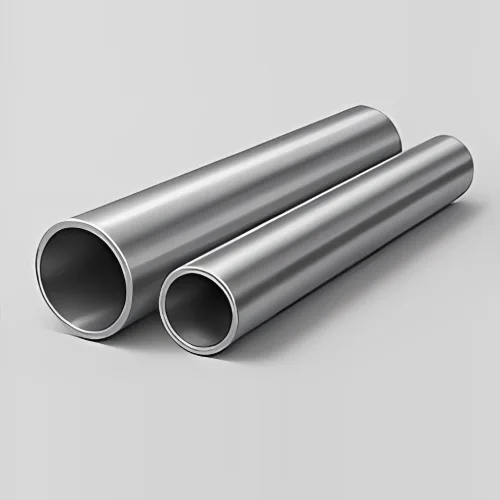
430 Stainless Steel Tube
Keywords: 430,
Standard: ASTM, AISI, DIN, EN, GB, JIS
Technique: Hot Rolled/Cold Rolled/Galvnized
Processing Service: Welding, Punching, Cutting
Available Size Range: Click here
Volume: 0
Get A Quote
Keywords: 430,
Standard: ASTM, AISI, DIN, EN, GB, JIS
Technique: Hot Rolled/Cold Rolled/Galvnized
Processing Service: Welding, Punching, Cutting
Available Size Range: Click here
Volume: 0
Get A QuoteOxidation Resistance
Withstands temperatures up to 815°C (1.500°F) in intermittent service, ideal for exhaust systems and heat shields.
Resists scaling and discoloration in dry atmospheres (e.g., ovens, furnaces).
Formability & Weldability
High ductility in annealed condition (elongation ≥22%) for seamless bending and roll forming.
Compatible with TIG and MIG welding using 430 filler metal (AWS ER430).
Aesthetic Versatility
Available in brushed (#4), mirror-polished (BA), or embossed finishes for decorative applications.
Cost Efficiency
Nickel-free formula reduces material costs, ideal for high-volume production.
| Region | Standard | Grade | Surface Finish |
|---|---|---|---|
| USA | ASTM A268 | UNS S43000 | Annealed, Pickled |
| Europe | EN 10297-2 | X6Cr17 (1.4016) | Bright Annealed (BA) |
| Asia | JIS G4303 | SUS430 | Hairline (HL), No. 4 |
Chemical Composition (wt%)
| Cr | C | Mn | Si | P | S | Fe |
|---|---|---|---|---|---|---|
| 16–18% | ≤0.12% | ≤1.0% | ≤1.0% | ≤0.04% | ≤0.03% | Balance |
Mechanical Properties
| Condition | Tensile Strength | Yield Strength | Hardness (HV) |
|---|---|---|---|
| Annealed | 450–600 MPa | 310 MPa (min.) | 150–200 |
| Cold Worked | 600–750 MPa | 480 MPa (min.) | 200–250 |
Automotive: Exhaust system components, trim moldings, and fuel filler necks.
Architecture: Elevator cladding, handrails, and sunshade louvers.
Appliances: Dishwasher tubs, oven cavities, and refrigerator liners.
Industrial: Conveyor belts for food processing, heat exchanger shells.
Welding Precautions
Avoid prolonged exposure to 425–900°C to prevent grain growth and embrittlement.
Post-weld annealing at 790–815°C restores corrosion resistance.
Surface Treatment
Passivate with nitric acid (HNO3 20–50%) to enhance chromium oxide layer formation.
Cutting & Machining
Use carbide tools for high-speed machining; lubricate with chlorinated oils.
Quality Assurance
NDT Testing: 100% hydrostatic testing at 1.5× working pressure (ASTM A450 compliant).
Certifications: RoHS compliant, REACH SVHC-free, ASTM A480 for surface finish.
Traceability: Mill certifications with EN 10204 3.1 and heat number tracking.
Q1: Is 430 stainless steel tube suitable for coastal environments?
A1: Limited suitability—avoid prolonged exposure to chlorides. For marine use, consider 316L or AL-6XN.
Q2: Can it be used for potable water systems?
A2: Yes, but only in low-chloride (<50 ppm) water. Passivation per ASTM A967 is recommended.
Q3: How does 430 compare to 409 stainless steel?
A3: 430 offers higher Cr content (16–18% vs. 11%) for better oxidation resistance but lacks 409’s titanium stabilization.
Q4: Does it require special storage conditions?
A4: Store in dry, ventilated areas; avoid contact with carbon steel to prevent galvanic corrosion.
Q5: Can 430 tubes be powder-coated?
A5: Yes—apply a chromate pretreatment for improved adhesion and corrosion protection.
Products
Phone